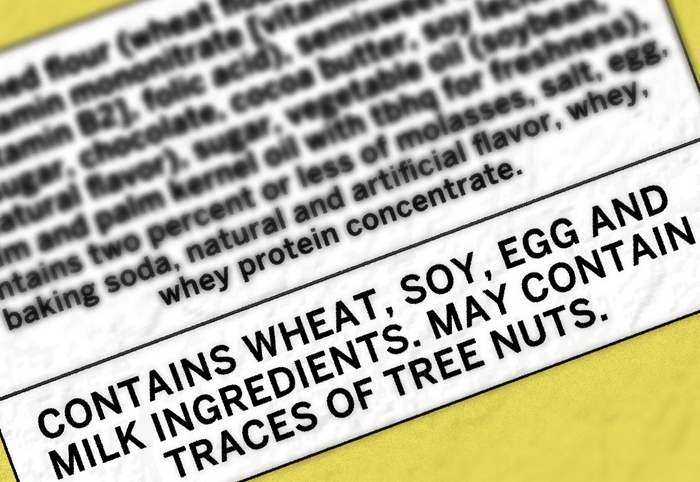by Betsy Craig, CEO of MenuTrinfo®

“May contain…”
“May contain traces of…”
“Manufactured in a facility that processes…”
“Made on shared equipment with…”
You’ve probably seen them before. These are precautionary allergen labeling statements commonly found on packaged foods. While for the majority of Americans it may be no big deal, these statements can be confusing and stressful for individuals managing food allergies.
Under the Food Allergen Labeling and Consumer Protection Act (FALCPA), packaged foods must clearly label and identify ingredients containing one or more of the Top 8 allergens. The FALCPA laws apply to intentional ingredients and are regulated by the U.S. Food and Drug Administration (FDA). There are two ways manufacturers may declare that there is a major allergen:
- Within the ingredient list, such as “casein (milk)” or “nonfat dry milk,” or
- A separate “Contains” statement, such as “Contains milk,” placed immediately after or next to the ingredient list.

Some manufacturers may voluntarily include a precautionary “may contain” statement on their packaging when there is a chance that a food allergen could be present. It is important to note that the wording of a precautionary label is not based on the amount of allergen present. Precautionary labels are voluntary and not regulated, however, the FDA advises that precautionary allergen labeling “should not be used as a substitute for adhering to current Good Manufacturing Practices” and “must be truthful and not misleading.”
So how do individuals who are managing food allergies navigate foods with precautionary labels? There is no guarantee that products without these warnings will not contain traces of allergens. Therefore individuals with food allergies should contact the manufacturer and ask about their food allergy management policies and procedures. It may be best to avoid foods all together when a “may contains” statement lists the allergen they are avoiding. This advice also coincides with advice offered by most allergists and Food Allergy Research and Education (FARE).



